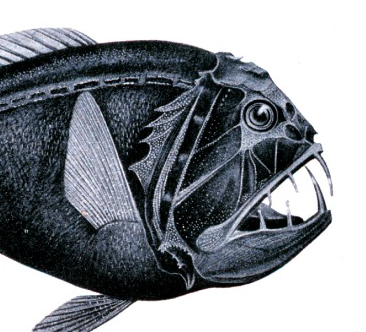The Paper:
Werner, T. B., Northridge, S., Press, K. M., & Young, N. (2015). Mitigating bycatch and depredation of marine mammals in longline fisheries. ICES Journal of Marine Science: Journal du Conseil, 72(5), 1576-1586 DOI:10.1093/icesjms/fsv092
Introduction:
Longline fishing is a prevalent form of commercial fishing and allows for massive fish yields. Longlines can be used near the surface (pelagic longlines) to catch open-water fish such as tuna and swordfish, or near the seafloor (demersal longlines) to catch bottom-dwelling fish such as cod or halibut. Longlines consist of a very long mainline (up to 60 miles long) that is set and dragged behind a boat. The mainline has thousands of attached branchlines, each containing baited hooks used to lure and capture target fish. An unfortunate consequence of the longline design is that it attracts and easily snags non-target marine life (known as bycatch). A wide range of animals such as sea turtles, sharks, seals, seabirds, and marine mammals can get caught on hooks or entangled in fishing line (Fig. 1). Interactions with longlines can cause non-target animals, many of which are endangered, to suffer injury and even mortality.
Although bycatch is seen as a moral dilemma, fishers have been more concerned with the loss of the target catch due to marine mammal depredation or theft. Large marine mammals (i.e. killer whales, dolphins, and sperm whales) are drawn to the baited longlines, find easy access to prey, and steal the bait or target fish from the hooks. Nearby marine mammals may also spook target fish, causing them to avoid the baited hooks altogether. Furthermore, marine mammals may damage fishing gear, specifically hooks or other components of longlines as they try and break free from capture or entanglement.

As is, longline fishing appears to be both detrimental to marine life and inefficient in maximizing target fish catch. In an attempt to help reduce future bycatch and increase the efficiency of longline operations, experts gathered for an intensive workshop. Participants refined a list of possible solutions and ranked them (low, medium or high) based on potential mitigation promise and research priority. Many solutions were considered, but only a handful were ranked as “medium to high”. A few of the most promising solutions are discussed below, they include: terminal gear modifications, fishers accountability, and real-time monitoring.
Terminal Gear Modifications:
According to participants, the best way to reduce unwanted catch and mortality from longlines is to modify the fishing gear itself. Using hooks that are slightly weaker and more flexible may allow caught animals to better release themselves. Circle hooks with an attached appendage also seem to reduce catch rates of multiple species (especially sea turtles) when compared to normal circle hooks (Fig. 2 A, B). The appendage is thought to increase the surface area of the hook, form a physical barrier to ingestion and make it harder for the hook to attach in the gut. Improved hooks would need to remain strong enough to retain the target catch.

Fishery Closures and Real-time Monitoring:
Another way to lessen unwanted bycatch would be to implement triggered closures of the fisheries. This strategy would hold fishers accountable for reporting bycatch and keeping it below a certain threshold number. If bycatch were to increase above this threshold, the entire fishery would be closed for the remainder of the fishing season. In fear of losing profit, fisheries would comply with regulations and in the process lower harmful bycatch. This method would only work if vessels strictly adhere to protocols and correctly report bycatch.
It is challenging to monitor marine mammals near longlines and decrease theft of the target fish. The best suggestion from the workshop was to further explore near real-time monitoring. Satellite tags enable fishers to track the location of marine mammals and avoid setting longlines in the vicinity of tagged animals. This method would be most effective in confined areas with small marine mammal populations (such as killer whales in the Crozet Islands). It would be physically and financially improbable to track the activity of hundreds of marine mammals!
Conclusion and Significance:
Over the last few decades, commercial fishing has been made easier with the use of longlines. Though good for catching target fish, longline fisheries involve frequent interactions with other marine animals. Non-target species become hooked on baited lines and suffer injury or even mortality. Large marine mammals tend to steal target fish off the baited hooks and damage fishing gear in the process. Numerous suggestions have been made to improve longline operations and lower deadly bycatch, but most are hard to put into action.
Hook modifications, triggered closures, and monitoring devices may be the most practical solutions, but further research into their success in the field is needed. The pursuit of a solution to longline bycatch is complicated and will likely involve a combination of different gear modifications and fishing regulations. A quick solution would be ideal, especially for fisheries that impact threatened species and endure economic losses through marine mammal theft. A more realistic approach is to continue engaging in collaborative research between science and industry and to further evaluate the most promising solutions.
What are your thoughts on ways to improve longline fishing? How can we reduce bycatch?
I am a first year MS candidate at the University of Rhode Island, Graduate School of Oceanography. I am interested in plankton ecology and the dynamics within plankton food webs. My research interests include the behavioral and physiological responses of phytoplankton and heterotrophic predators.

benny is the best